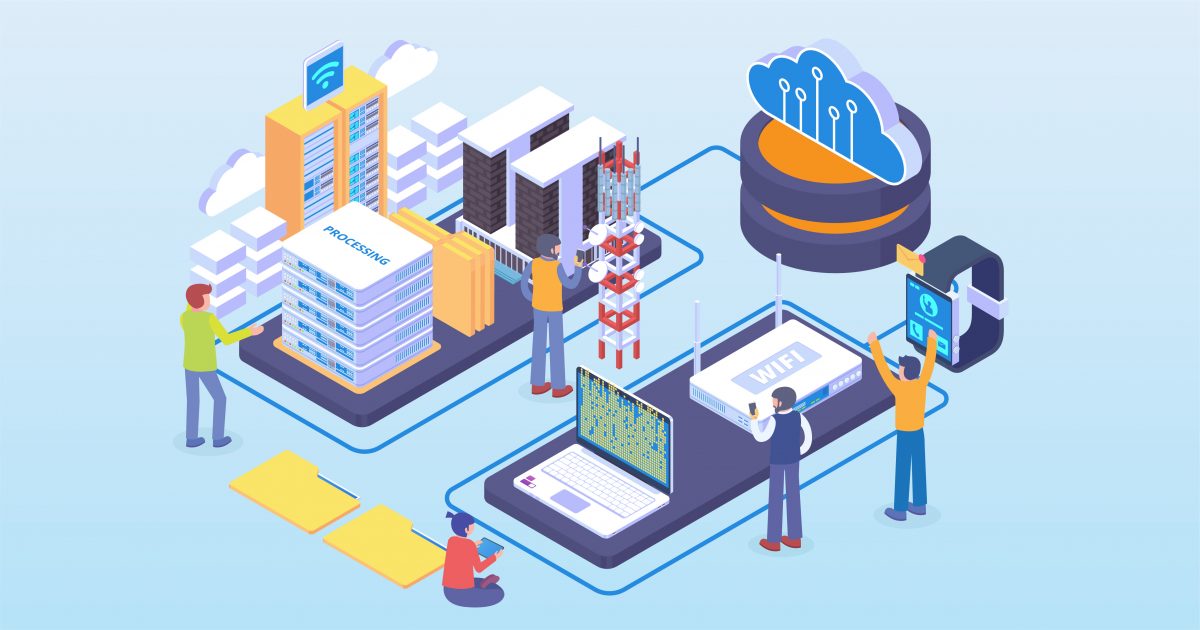
Edge Computing In 2020
In 2020, we are in the cloud computing era. Many of us still own personal computers, but we mostly use them to access centralized services like Dropbox, Gmail, Office 365, Slack, etc. As centralized as this all sounds, the truly amazing thing about cloud is that a large percentage of users and companies rely on the infrastructure, hosting, machine learning and compute power of a very select few cloud providers: Amazon, Microsoft, Google, Alibaba, and IBM.
Almost everything that can be centralized has been centralized. Most of the opportunities for the cloud lie on the “edge”. So, what is edge?
Definition:
Edge is part of distributed computing topology in which information processing is located close to the edge, where things and people produce or consume the information.
Edge is transforming the way data is being handled, processed, and delivered from millions of devices around the world.
The explosive growth of IoT and of connected devices, along with new applications that require real-time computing power, continues to drive edge. Faster networking technologies, such as 5G are allowing edge to accelerate the support of real-time applications like video processing and analytics, self-driving cars, artificial intelligence, and robotics.
Why Does EDGE Matter?
For many companies, cost savings alone can be the driver towards deploying an edge-computing architecture. The biggest benefit of edge is the ability to store data faster, enabling more efficient real-time applications.
Manufacturers such as NVIDIA have recognized the need for more processing at the edge, which is why we’re seeing new systems modules that include artificial intelligence functionality built into them.
Use Cases for EDGE:
- Autonomous Vehicles
- Industrial automation
- Smart cities
- Finance and Banking
- Healthcare
- Augmented Reality and Virtual Reality
- Retail
- Connected homes and offices
- Predictive maintenance
- Video monitoring
- Software-defined networking
- Blockchain
- Fog computing
- IoT
- Gaming
- Content delivery
- Virtual computing
- Agriculture
- Logistics
- Energy
No single application will drive the emergence of general-purpose edge platform. However, taken all together, these use cases will create a platform ecosystem around the edge. One that can handle heterogeneous workloads while enabling new possibilities not yet imagined.
Questions to Ask Yourself In this Era of EDGE Computing
What is your strategy to impact your customer experience in the connected world we live in?
What ecosystem partnerships can be beneficial for specific use cases?
For example, when dealing with the retail channel, how can real-time customer traffic affect dynamic promotions to drive sales? Can they partner up with banks or players in complementary verticals to gain customers?
How will EDGE help your business in real time?
Based on the above example, the retailer might be able to suggest other products to the customer based on the previous interaction.
How do you plan to leverage machine learning at the edge?
Going back to the example, how do popular items affect “just in time” manufacturing, procurement and supply chain workflows. These can be augmented with this fresh data.
What costly events can be prevented if you were notified sooner?
Reduction in unnecessary inventory, damage, and other quality issues.
The growth of EDGE is about to take a huge leap. Right now, companies are generating about 10% of their data outside a traditional data center or cloud; however, within the next five years, that will increase to 75%. That’s largely due to the need to process data emanating from IoT devices for the use cases unidentified. All industries have the potential for transformation, thanks to EDGE. However, it will depend on how they address their computing infrastructure.
“Edge is transforming the way data is being handled, processed, and delivered from millions of devices around the world.”
instor solutions
the instor difference
INSTOR SOLUTIONS: Founded in 1996, Instor is a global leader in data center design, build, management, structured cabling, power infrastructure, data center moves & migration, specialized containment, and cooling solutions. Instor has designed and installed infrastructure solutions for high-growth startups to Fortune 100 companies and public institutions. Based in the San Francisco Bay Area, Instor operates throughout the U.S. and in the European Union and has offices in Ashburn, Virginia, Dallas/Fort Worth, Texas, Hillsboro, Oregon, and a European branch in Dublin, Ireland. Additional information can be found at https://www.instor.com.
Instor Data Infrastructure
Analysis
With the explosion of new challenges and exciting new technology on a daily basis it doesn’t take long for once great strategies and design to grow cumbersome and inefficient. Our team of experts have the answers to your biggest questions and can provide an extensive analysis of your data infrastructure. It’s efficiently provided and at no cost to you.



